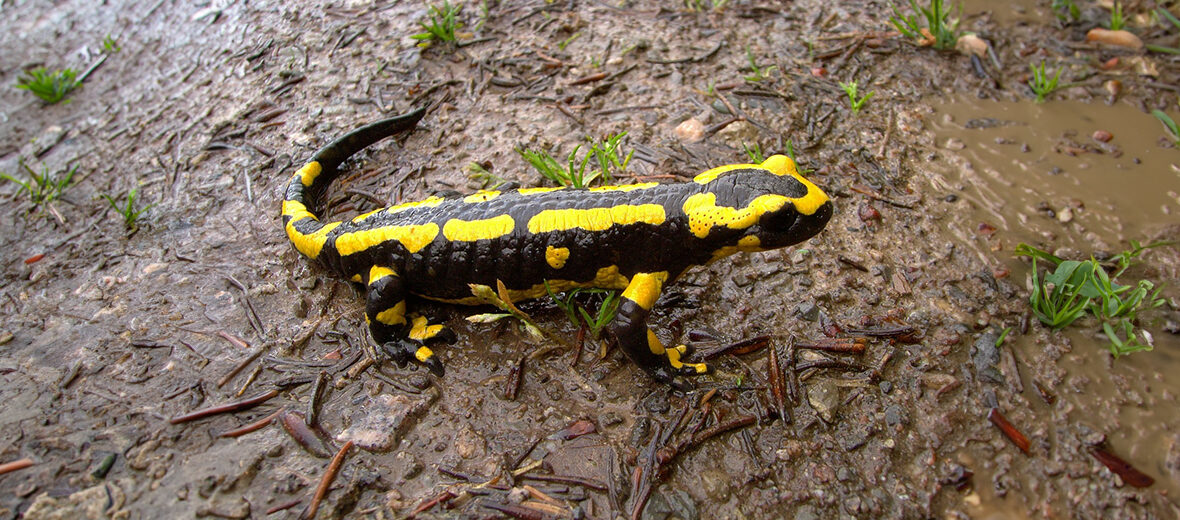
The salamander is in a group of amphibians typically characterized by a lizard-like appearance, with slender bodies, short limbs, and the presence of a tail in both larvae and adult form. They can be found on every continent, sans Antarctica. These critters have some pretty amazing abilities. Sallies are listed as anywhere from Least Concern to Critically Endangered by the IUCN, based on the species.
First the Stats…
Scientific name: Urodela
Weight: Up to 66 lbs.
Length: Up to 6 feet
Lifespan: Up to 100 years
Now on to the Facts!
1.) The name Salamander comes from the Greek word for Fire Lizard!
2.) Salamanders are nocturnal (active at night).
3.) Salamanders vary in size. The minute salamander is the smallest salamander, reaching only 1.1 inches in length. The Chinese giant salamander is the largest salamander, reaching over 5+ feet in length.
4.) Some salamander species can be poisonous and some even have teeth.
5.) Salamanders are carnivores, which means they eat meat instead of vegetation. They prefer other slow-moving prey, such as worms, slugs and snails. Some larger types eat fish, small crustaceans and insects. Some salamanders eat frogs, mice, and even other salamanders.
6.) All salamanders lay eggs, with 1 exception. The fire salamander has live offspring and gives birth to 10 – 30 young at 1 time. Depending on the species, other salamanders lay up to 450 eggs at a time!
But wait, there’s more!
7.) A salamander’s skin is highly sensitive to environmental pollution because toxins easily pass through the skin and can reach their inner organs.
Did you know…
These animals are capable of autotomy, which means self amputation done by an animal, as a part of its self-defense mechanism. They try to divert the attention of the predator by dropping their tails, that wiggle around.
8.) Axolotls will develop a missing limb or tail in the next couple of weeks due to their amazing ability to regenerate body parts, even vital organs and parts of their brains. See the video below for more info…
9.) Salamanders breathe using their lungs, gills, and their skin, depending on their lifestyle (water or land). Aquatic forms have gills located behind their head, as a bushy mass. Animals which breathe by skin have a dense capillary network in the skin, which is used for gas exchange.
10.) Salamanders can live a very long period of time. Chinese giant salamanders can live up to 55 years.
Now a Short Salamander Video!
Learn more about all kinds of cool critters, right here!
Want to suggest a critter for me to write about? Let me know here.
Learn more about all kinds of cool critters, right here!
Some source material acquired from: Wikipedia & IUCN



